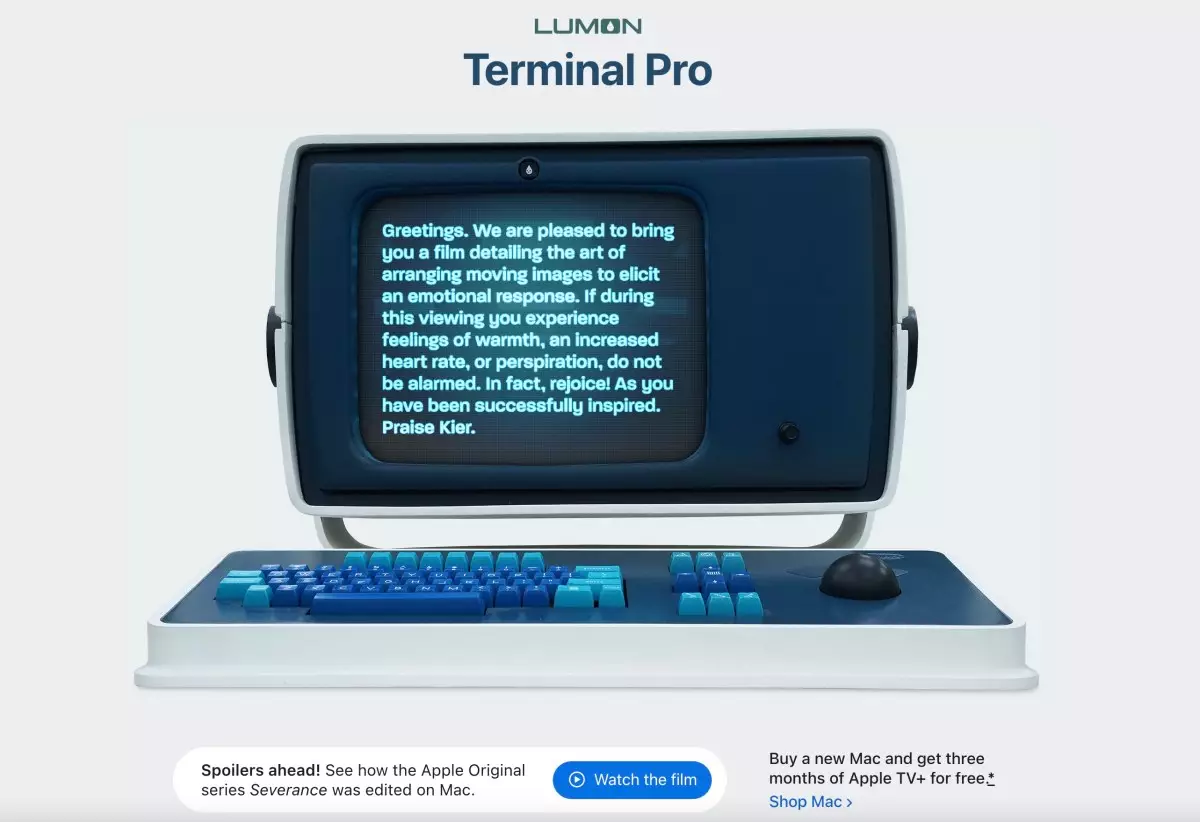The Lumon Terminal Pro, a fictional computer showcased in Apple TV’s acclaimed series “Severance,” has caused quite a stir on Apple’s official website. This intriguing development raises questions not just about branded content, but the way Apple is leveraging pop culture in its marketing strategy. While the device’s appearance is eye-catching, it ultimately functions as a clever promotional tool for Apple’s streaming service, Apple TV+. Instead of being available for purchase, the Lumon Terminal Pro serves as a vibrant advertisement, enticing customers to explore other offerings while drawing them into Apple’s unique universe.
A Strategic Marketing Move
This marketing strategy is nothing short of brilliant. By embedding a fictional product within its digital storefront, Apple successfully generates buzz around both its new series and the broader Apple TV+ service. The integration of a fictional terminal into its real-world retail experience transforms the ordinary act of shopping into an interactive adventure. Customers are invited not only to engage with new technology but also to enter the narrative realm of “Severance.”
Furthermore, this tactic aligns perfectly with Apple’s ongoing shift towards becoming a service-centric company. The surge in their services revenue—now a staggering $26.34 billion—demonstrates the efficacy of such marketing innovations. As the tech giant diversifies its offerings, the seamless blending of entertainment with technology elevates the customer experience, compelling users to consider Apple’s brand beyond mere devices.
Beyond Just Marketing: A Cultural Commentary
The presence of the Lumon Terminal Pro on Apple’s platform does more than promote services; it embodies a cultural critique found within “Severance” itself. The series delves into themes of labor, identity, and corporate culture. By linking a fictional tech product to real-life consumers, Apple invites viewers to reflect on the implications of a corporate-driven world, all while bridged by their technology. This meta-commentary enriches viewer engagement, prompting discussions around ethical implications and the nature of work in modern society.
Moreover, Apple extends this connection with an array of marketing tie-ins: e-books, themed playlists, and even a podcast featuring the series’ creators and actors. These multifaceted efforts amplify audience engagement and create a strong community around the show. They also serve as a reminder of how art and commerce can intersect, often in surprising and thought-provoking ways.
Mastering the Art of Storytelling
Apple’s approach exemplifies a masterclass in storytelling. By embedding a fictional entity like the Lumon Terminal within its marketing content, Apple doesn’t just sell products; it offers narratives that resonate with customers on various levels. In an age where brand loyalty is critical, this innovative strategy ensures that Apple remains at the forefront of consumer consciousness, merging entertainment and technology into a cohesive experience.
In a highly competitive landscape, such thoughtful integration of fiction into retail spaces might just be the way forward. By reimagining traditional advertising through the lens of cultural phenomena, Apple is proving that there is much to gain from the stories we tell and the connections we foster within those narratives.

